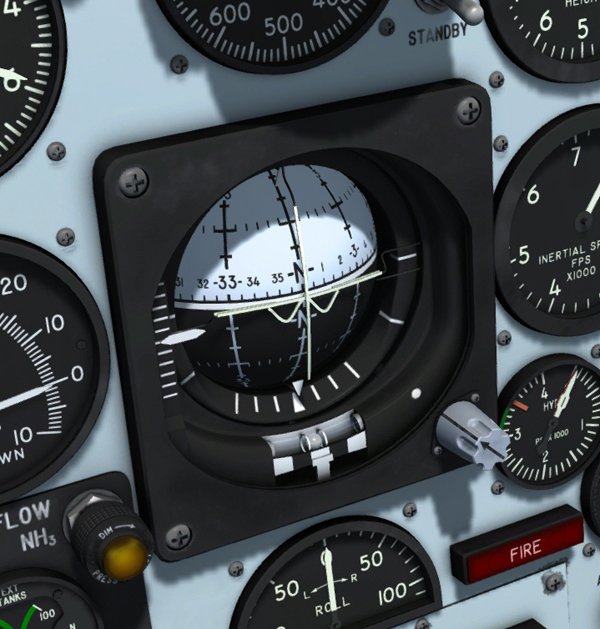
Attitude indicator (Prepar3D® v2 screenshot).
Note: For convenience of presentation, the inertial all-attitude flight data system henceforth is referred to as the stable platform system.
The stable platform system is essentially a navigating system designed to function over the earth within a high range area, approximately 720 miles long and 240 miles wide. Primarily, the system provides an attitude, velocity, and height record in a flight environment in which conventional flight reference instruments cease to function (that is, during prolonged operation at high altitudes and Mach numbers).
The equipment in this system is operated with no angular range limitations or tumbling effects inherent in conventional gyro equipment. The system displays primary flight data to the X-15 pilot and transmits this data to recorders in the X-15 airplane.
The system is divided functionally into two groups. The first group, in the X-15, consists of the platform, computer, and flight instruments, which present attitude, velocity, and altitude indications. This equipment supplies all the required data after the X-15 is launched. The platform itself has four independent gimbals that permit unlimited maneuvers about the longitudinal, lateral, and vertical axes. It also has three gyros and three accelerometers.
The second group, in the carrier airplane, is used to supply the proper initial conditions to the computer and thus align and stabilize the platform before launch. A control panel in the carrier airplane enables an operator to continuously monitor performance of the flight data system before launch, and to preset the required calibrations to the X-15 through an umbilical cord. In captive flight, the system is slaved to compass and velocity-measuring equipment in the carrier airplane. During free flight, the system dead-reckons from the launch point.
In this section:
Stable Platform Controls and Indicators